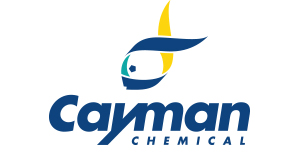Monotropein, CAS 5945-50-6
Monotropein, CAS 5945-50-6
SKU
CAY27595-25
Packaging Unit
25 mg
Manufacturer
Cayman Chemical
Availability:
loading...
Price is loading...
Shelf life (days): 1460.0
Formulation: A crystalline solid
Formal Name: (1S,4aS,7R,7aS)-1-(ß-D-glucopyranosyloxy)-1,4a,7,7a-tetrahydro-7-hydroxy-7-(hydroxymethyl)-cyclopenta[c]pyran-4-carboxylic acid
Purity: ≥98%
Formula Markup: C16H22O11
Formula Weight: 390.33928
CAS Number: 5945-50-6
Notes: Monotropein is an iridoid glycoside originally isolated from M. officinalis roots and has diverse biological activities.{46362,46363,46364,46365,46366} It increases cell viability and migration of bone marrow-derived endothelial progenitor cells (BM-EPCs) when used at concentrations ranging from 0.1 to 1,000 μM.{46362} Monotropein inhibits apoptosis and reduces levels of matrix metalloproteinase-3 (MMP-3) and MMP-13 in chondrocytes.{46363} It inhibits LPS-induced nuclear translocation of NF-κB and reduces COX-2, inducible nitric oxide synthase (iNOS), TNF-α, and IL-1β mRNA expression in RAW 264.7 cells.{46364} Monotropein (100 and 200 mg/kg) reduces colonic myeloperoxidase (MPO) activity, COX-2 and iNOS mRNA expression, and disease severity in a mouse model of ulcerative colitis induced by dextran sulfate sodium (DSS; Item No. 23250). It increases bone mineral content, bone mineral density, and improves bone microstructure in ovariectomized mice when administered at doses of 40 or 80 mg/kg.{46365} Monotropein (20 and 30 mg/kg) reduces acetic acid-induced writhing in mice and carrageenan-induced paw edema in rats.{46366} It also decreases macrophage infiltration and wound healing time and increases blood vessel formation in a rat model of wound healing.{46362}
Formulation: A crystalline solid
Formal Name: (1S,4aS,7R,7aS)-1-(ß-D-glucopyranosyloxy)-1,4a,7,7a-tetrahydro-7-hydroxy-7-(hydroxymethyl)-cyclopenta[c]pyran-4-carboxylic acid
Purity: ≥98%
Formula Markup: C16H22O11
Formula Weight: 390.33928
CAS Number: 5945-50-6
Notes: Monotropein is an iridoid glycoside originally isolated from M. officinalis roots and has diverse biological activities.{46362,46363,46364,46365,46366} It increases cell viability and migration of bone marrow-derived endothelial progenitor cells (BM-EPCs) when used at concentrations ranging from 0.1 to 1,000 μM.{46362} Monotropein inhibits apoptosis and reduces levels of matrix metalloproteinase-3 (MMP-3) and MMP-13 in chondrocytes.{46363} It inhibits LPS-induced nuclear translocation of NF-κB and reduces COX-2, inducible nitric oxide synthase (iNOS), TNF-α, and IL-1β mRNA expression in RAW 264.7 cells.{46364} Monotropein (100 and 200 mg/kg) reduces colonic myeloperoxidase (MPO) activity, COX-2 and iNOS mRNA expression, and disease severity in a mouse model of ulcerative colitis induced by dextran sulfate sodium (DSS; Item No. 23250). It increases bone mineral content, bone mineral density, and improves bone microstructure in ovariectomized mice when administered at doses of 40 or 80 mg/kg.{46365} Monotropein (20 and 30 mg/kg) reduces acetic acid-induced writhing in mice and carrageenan-induced paw edema in rats.{46366} It also decreases macrophage infiltration and wound healing time and increases blood vessel formation in a rat model of wound healing.{46362}

 Deutsch
Deutsch










